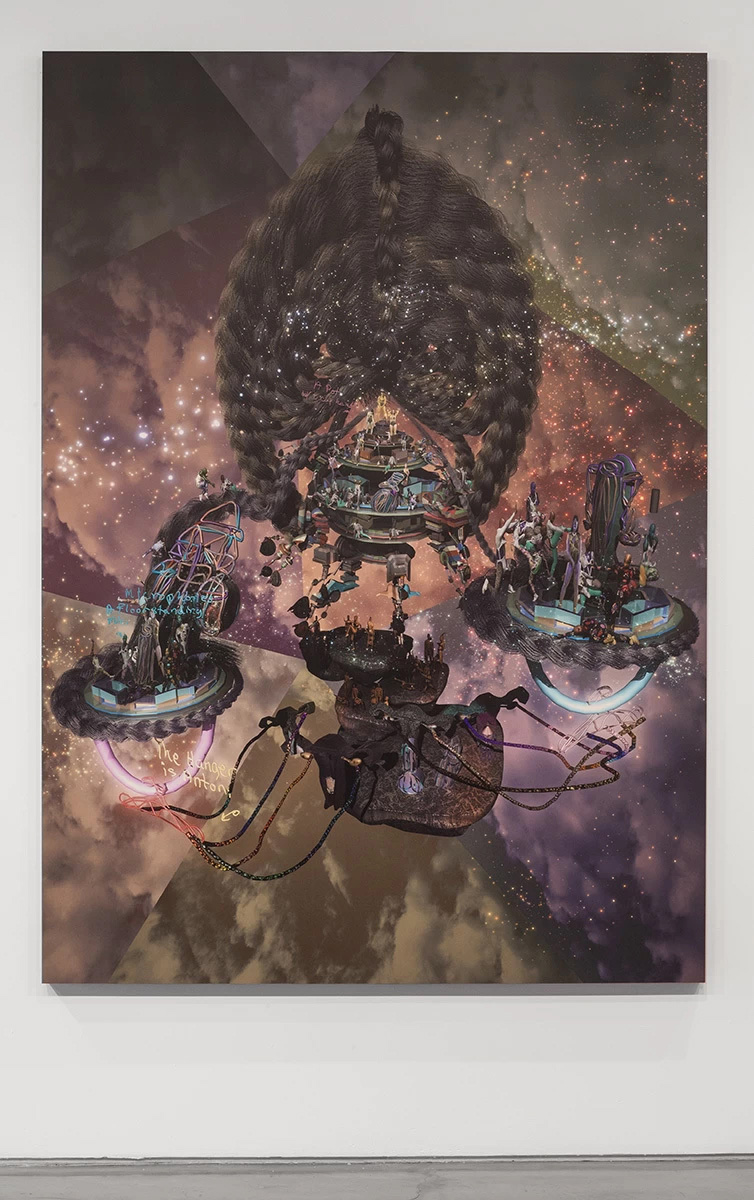
- Source: i-D Magazine
- Author: Emily Manning
- Date: March 03, 2015
- Format: PRINT AND DIGITAL
How Jacolby Satterwhite Conquered the Art World.
At just 28, the new media master has already racked up a resume to rival artists twice, even three times his age

Photograph by Job Piston
At just 28, Jacolby Satterwhite has already racked up a resume to rival artists twice, even three times his age. The Southern born, New York-based new media master has been featured in the Whitney Biennial, the Los Angeles Museum of Contemporary Art, and the Studio Museum in Harlem. Which is probably why Forbes came knocking to feature him in its annual 30 Under 30 spotlight this past year.
“I became interested in making art from a very early age, from my experiences with Sunday school to watching my mother chronically make drawings that she was sending off to companies trying to get her inventions patented,” Jacolby explained of his mother’s compulsive creations resulting from her declining mental health. Her immense archive of drawings has become one of Jacolby’s greatest resources: he recontextualizes the drawings in digital video pieces through animations, performances, and virtual sculptures. “It’s shifted to a much more dynamic and larger practice. It’s kind of come full circle to the reason why I started working today,” he explained.
As Miami’s Perez Art Museum rolls out its new program ‘Waves’—a series of specially-commissioned collaborative performances between musicians and artists for which Jacolby teamed up with Trina and Total Freedom (Trina will perform live at the museum on April 30)—we picked the artist’s brain about all things new media.
When did you make the switch to new media from drawing and painting?
I switched to new media because it was a lot more porous. Painting has its own history, so it’s quite a fight to try and toggle between painting history and your own conceptual message. I broke down those barriers in order to have more control over what I was doing conceptually. Eventually, I decided to focus on performance and work with more personal archives because I know them better that anyone else and they’re a wonderful platform to springboard some of my own ideas. I also realized my mother’s drawings were more sophisticated than a lot of the resources I was using for inspiration previously. With video, I can make a moving painting. I can build these drawings, create virtual sites, composite my own body within them a hundred times. So it just was a way to expand what I was trying to do as a 2D image maker.
When your personal source materials like drawings or home movies enter your digital space, what happens to them?
I tend to use appropriation and outsourcing of found materials, found archives, and public images as references. Observation is the most important component of my practice. I can observe a landscape and it will enter the aesthetic of my work, or I can observe a family photograph, a live action performance video, or a drawing. For me, it’s just about the reification of this abstract content, bringing it together to form something more concrete, kind of like a moodboard a fashion designer might work with to make a garment. Regardless of whether it’s personal or not, I still find it to be a useful archive – it just happens to be produced by the most important person in my life! The language is very disheveled and there are many beautiful double entendres in the spelling; there’s a sense of surrealism that I can get from that archive of work.
What role does performance play in your work?
When I move in my work, it’s a response to the language and objects in my mother’s drawings. Movement is a compositional thing for me. I’m interested in the way my performance can help generate narrative and be used as an image making tool. I go to the green screen and react to language and drawings. If I have a drawing of a pulley and a lever or a hammer, I react to those objects in the way that I move so that later on, I can attach virtual renditions of those objects to my body in the program. In this way, performance is practical; it helps me build the storyline. Performance in the live arena also helps me make the video more sculptural, bleed it out into the space, and contextualize it in a way that makes it much more dynamic and personalized. Performing also brings in natural, inherent politics that I don’t have to talk about in a didactic way. Just me existing as a black, gay body in a performance arena makes those conversations come up.

Jacolby Satterwhite, En Plein Air: Abduction II, 2014. C-print in artist’s frame. 84 x 60 x 3 inches. Courtesy the artist and Morán Morán
Can you tell us more about your collaboration for PAMM’s Waves series? What was it like working with Trina and Total Freedom on this project?
I’ve liked Trina since I was a kid and I thought it would be interesting to use her as inspiration. She’s so wonderful and so nice, she’s legendary. I love her raw, nasty, amazing lyrics and how they’re about being strong. She’s such a feminist, she’s so in charge. She talks about her body in such a muscular way and there’s such a sense of agency and control. I think it’s really inspirational for gay, black men in the South to hear someone like that when they’re in a not-so-confident place.
For the project, we got a big studio and I had Trina perform several gestures. Her team sent me some of her acapellas and a lot of her old materials, which I then gave to Ashland, aka Total Freedom. It’s a very abstract, ambitious, experimental film. It’s not a hip-hop video, but it uses Trina to help build something much more aggressive and large and wonderful.
Is it possible to be original in the digital age?
Honestly, I don’t think you can be original in this age because of the ways we’re so gridded: Tumblr, Google, the outsourcing of images. My whole practice is based on repurposing and archiving, so originality isn’t my priority, but maybe that was the right angle. I’ve been fortunate enough to have people tell me they feel my work is tapping into something original. I think when you crystalize the things you know the most, then you can be original. It’s not about pulling something out of thin air, it’s about what you’re familiar with and the ways you use it.
What’s up next for you?
Actually something really exciting but I can’t say! It’s cooler than the Trina project, but that’s all I can tell you.

